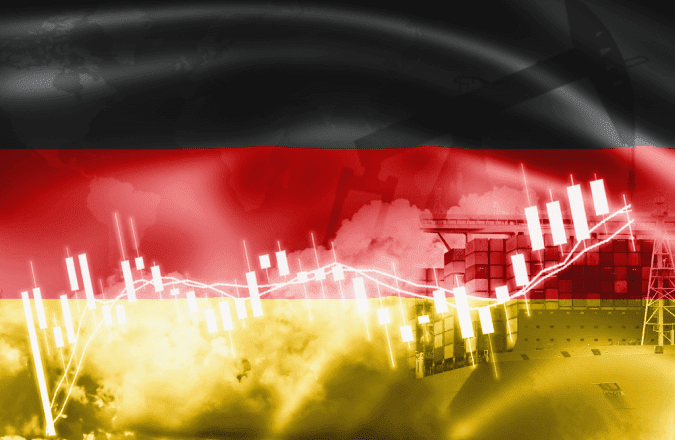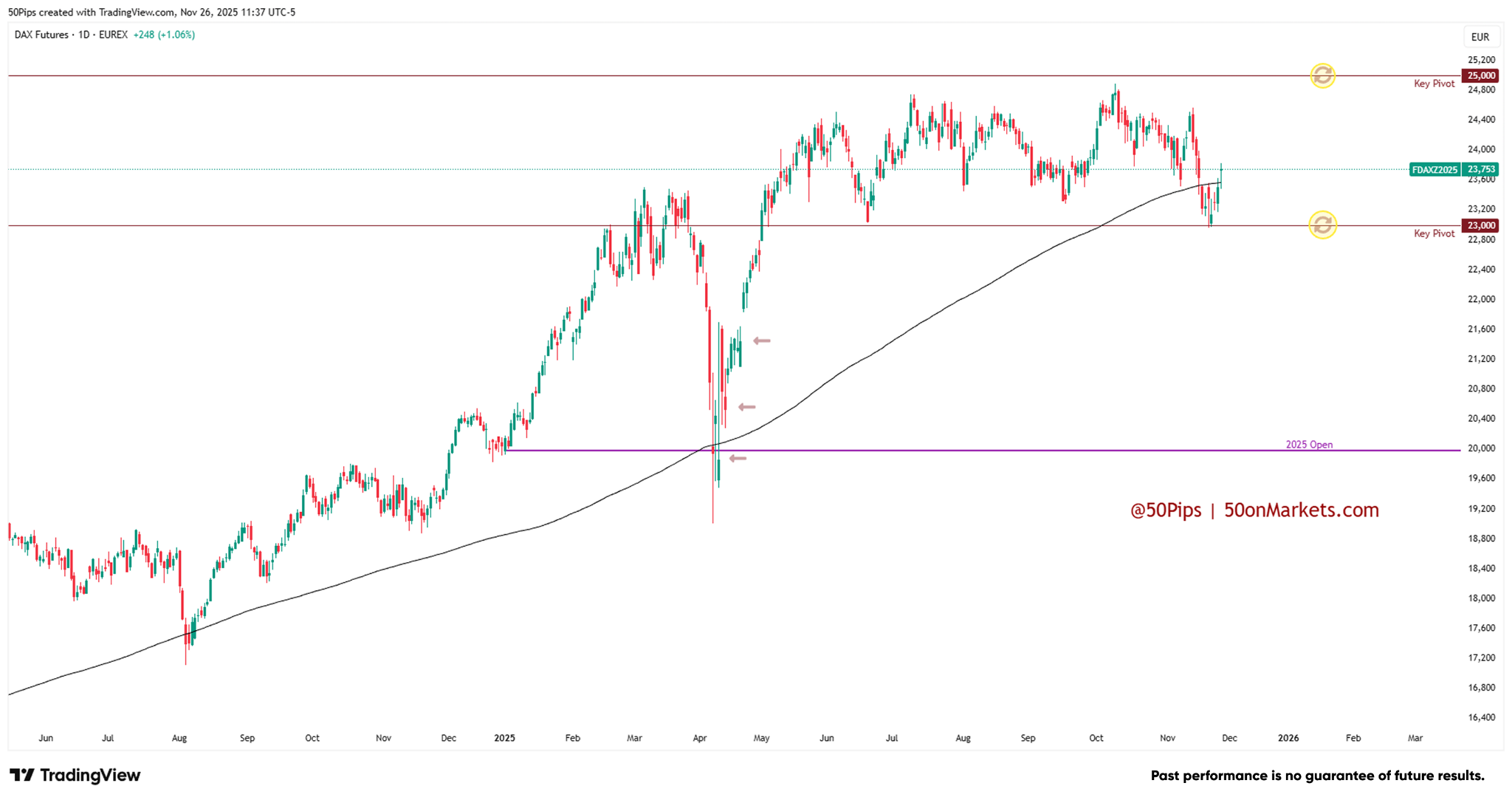DAX Futures: 2025 Performance Review and Year-End Outlook
DAX Futures ($FDAX) have delivered a solid ~19% year-to-date return through November 26, outpacing most global equity benchmarks despite Germany's persistent economic malaise.
Market Snapshot
DAX Futures ($FDAX) have delivered a solid ~19% year-to-date return through November 26, outpacing most global equity benchmarks despite Germany's persistent economic malaise. The index currently trades at 23,753, approximately down ~5% from October 9 record high but holding above the psychologically important 23,000 level. Critically, this performance masks a dramatic concentration: just five names—Rheinmetall (+~140%), Siemens Energy (~+120%), Commerzbank (~118%), Heidelberg Materials (~+85%), and Deutsche Bank (~+84%)—account for approximately 60–80% of index gains.
Macro Context
Germany's economic stagnation persists, with GDP growth forecasts at just 0.2% for 2025, improving to 1.2% in 2026, as industrial output struggles against high energy costs and supply chain disruptions. The ECB has held rates at 2% since October 30, after 200 basis points of easing between June 2024 and June 2025, prioritizing inflation control near the 2% target. Geopolitical risks, including ongoing conflicts and U.S.-China trade frictions, could shave 0.5–1% off euro area GDP via tariff shocks per ECB analysis. Despite Germany's weakness, the ECB raised 2025 eurozone growth forecasts to 1.2% in September, signaling qualified regional optimism. Berlin's €500 billion infrastructure fund marks a historic fiscal pivot, with defense spending jumping to €86 billion (2.4% of GDP in 2025) and constitutional reforms enabling massive infrastructure and defense borrowing over twelve years. Defense expenditures are projected to reach €162 billion by 2029. While positive effects are backloaded to mid-2026 onward, markets are pricing fiscal optimism as a key offset to cyclical weakness.
Technical Consolidation & Range-Bound Dynamics
The DAX has been range-bound between 23,000–25,000 since May 2025, following a volatile first half that saw an ~18% rally into March highs, followed by a sharp ~19% correction into April lows, and subsequently a ~28% recovery back into the current consolidation zone. Within this range, price action has been directionless and neutral—unable to generate sustained conviction in either direction. As long as the index remains confined within 23,000–25,000, the technical bias remains neutral with no clear edge. The picture turns bullish not only on daily closes above 25,000, but especially on weekly and monthly confirmations. Such a breakthrough of all time highs sets up a classical “any new high possible” scenario. Conversely, the picture turns bearish on daily breaks below 23,000, but critically on weekly and monthly closes below. Such a breakdown would open a retracement toward the yearly open level and the April 2025 lows into ~19,000.
 (Source: TradingView)
(Source: TradingView)
Past performance is no guarantee of future results.
Bottom Line
DAX Futures ($FDAX) have delivered respectable gains in 2025 despite Germany's economic stagnation, buoyed by fiscal reform optimism, ECB support, and extraordinary concentration in defense and financial sectors. The index now sits at a technical inflection: range-bound between 23,000–25,000 since May, it faces a binary outcome defined by confirmations above 25,000 (bullish) or below 23,000 (bearish). The critical risk worth highlighting: The DAX's headline ~19% return masks deteriorating breadth, with 60-80% of gains concentrated in five names. A correction in defense or financials could rapidly erase year-to-date performance, leaving only weak cyclical names behind. This concentration risk amplifies volatility and narrows profit opportunities to position rotation—not broad-based exposure.
— 50 Pips, Trader & market analyst.